Ami Vitale: From Photographer to Conservationist
![]()
Ami Vitale started as a photo editor for the Associated Press in 1993. She then quit her job to be a photographer/foreign correspondent in the Czech Republic in 1997. Today, she is a well-known conservationist championing the cause of endangered wildlife and the environment with her own photography and that of others.
“I got my courage from being behind the camera. The second I had it in my hands, I felt like a superwoman. By putting attention on others, it empowered me. This little black box gave me the courage and helped me realize that being an introvert was not a weakness – it actually gave me the ability to listen and truly hear others’ stories.
“Today, my motivations are very different from when I began. Photography and storytelling are much more than a tool for my own self-empowerment. In the beginning, I plunged right in to tell the stories of humanity and war, and I was asked to focus on the horrors of the world. After a decade, I realized a profound truth; I had been telling stories about people and the human condition, but the backdrop of every one of these stories was the natural world.
“In some cases, it was a scarcity of basic resources like water. In others, it was the changing climate and loss of fertile lands, but the demands placed on our ecosystem always drove conflict and human suffering. Still, billions on the planet do not have access to clean water.
“Today, my work is not just about people. It’s not just about wildlife either. It’s about how the destiny of both people and wildlife are intertwined and how small and deeply interconnected our world is.”
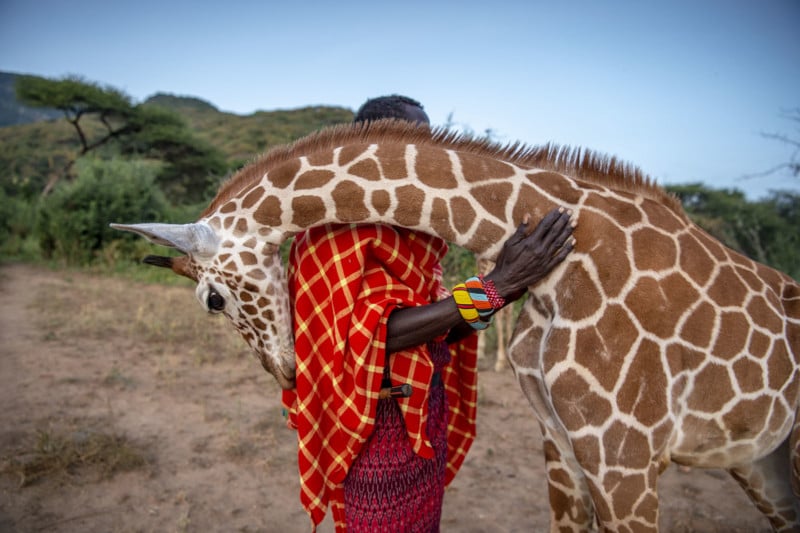
On Becoming a Photographer
Vitale did not become a photographer right away.
“I dreamt of being a photographer, but the people hiring couldn’t envision me, this quiet, young woman, as a photographer,” recollects Vitale. “The folks taking the shots were mainly men with a few remarkable exceptions.
“I was pigeonholed and felt stuck for many years, but I always had that dream. Even though my dreams were dismissed, I knew I had to try. Even if I failed, this was part of my journey. And I would never regret trying.”
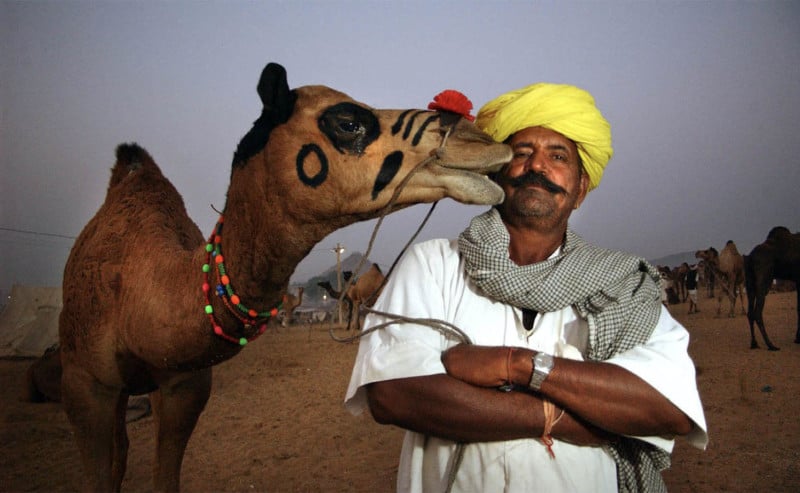
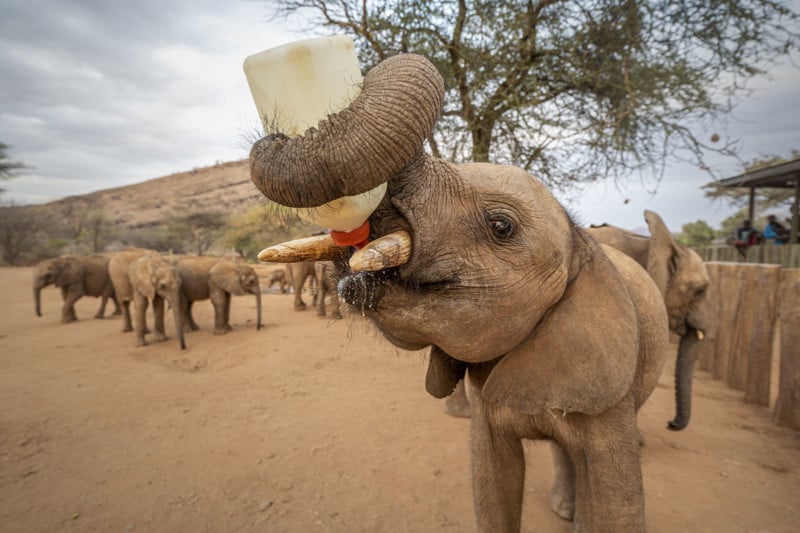
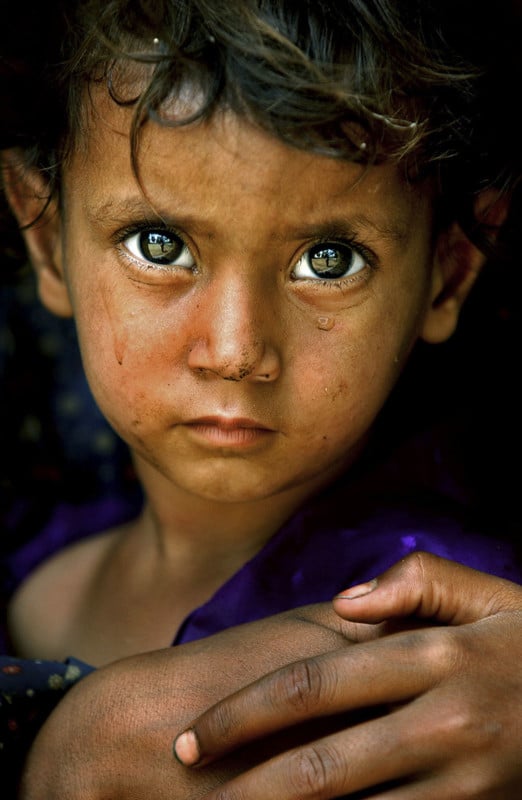
The photographer has stopped counting but thinks she has visited around 110 countries. She refuses to pick a favorite but is drawn to Kenya primarily because of the relationships she has created there.
![]()
“I want to travel less and be a much more thoughtful traveler [in the future], knowing all of the existential issues that there are,” says the photographer, “If there’s some reason to go to another country, it has to have a real purpose.”
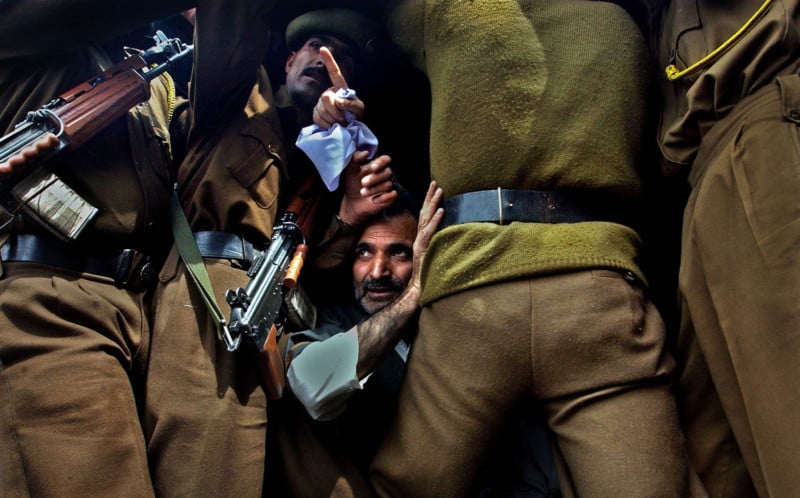
When a Rhinoceros Can Spark a Caring for Wildlife
Vitale can recall the exact moment when she truly understood how connected wildlife is to our own well-being. It happened on a cold, snowy day in December 2009 in a village outside Prague, the capital of the Czech Republic.
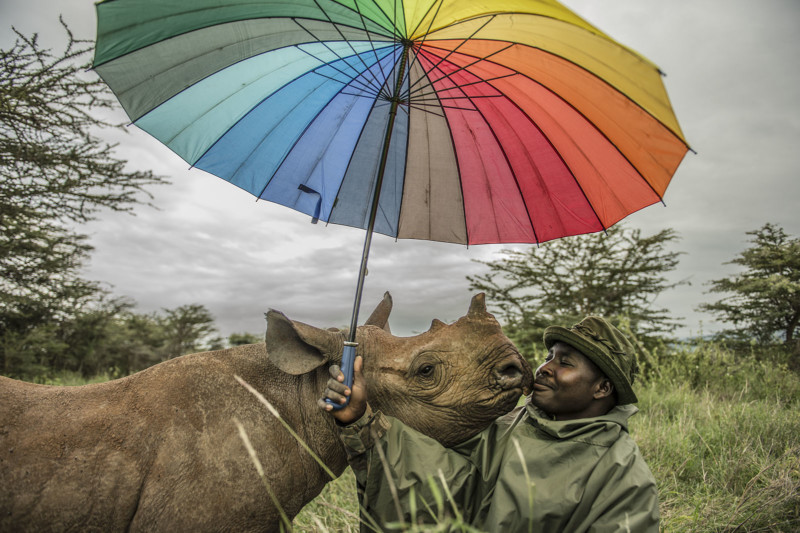
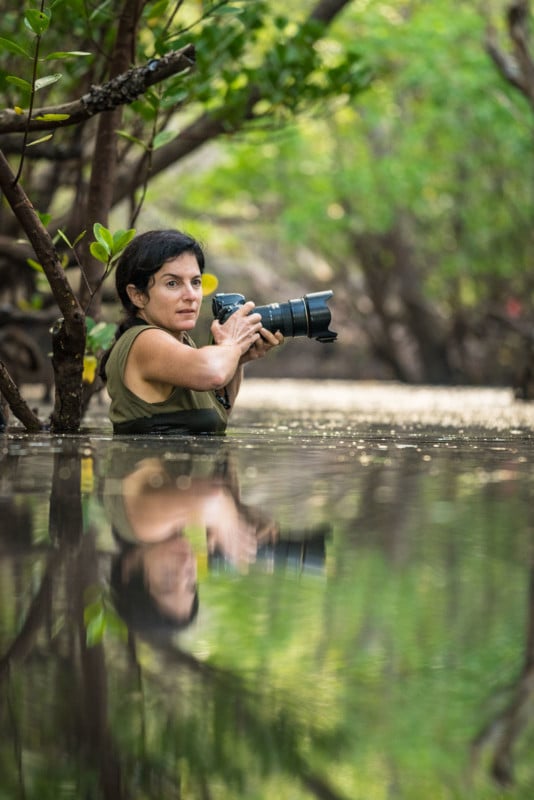
“It was on this day that I met a rhino named Sudan for the first time,” remembers Vitale. “And quite unexpectedly, this animal changed how I see the world forever. I heard about a plan to airlift four of the last Northern White Rhinos from Safari Park Dvůr Králové in the Czech Republic back to Africa.
“It sounded like a storyline for a Disney film, but in reality, it was a desperate, last-ditch effort to save an entire species. At the time, only eight were known to be alive, and they were all in zoos.
“The hope was to breed them. The air, water, and food, not to mention room to roam in Kenya, might stimulate them to breed—and the offspring would then be used to repopulate Africa. Sadly, that never happened.”
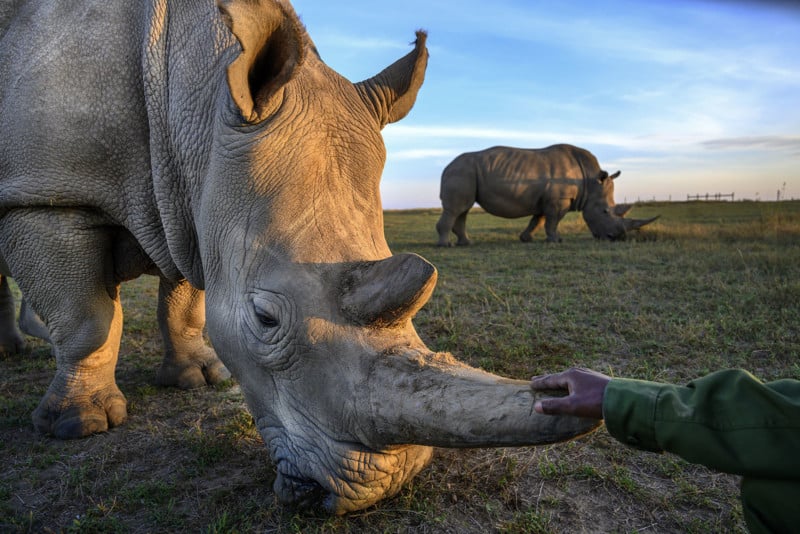
“Is There a Moon in America?”
In 1999, the photographer applied for a grant to study in the small West African country of Guinea Bissau on the West Atlantic coast of Africa. She packed her bags and headed to a small village called Dembel Jumpora in the middle of the country, where she shared a mud hut with Fatima and Uma, two co-wives, and their children. She learned to speak Fula to communicate with the Fulani tribe.
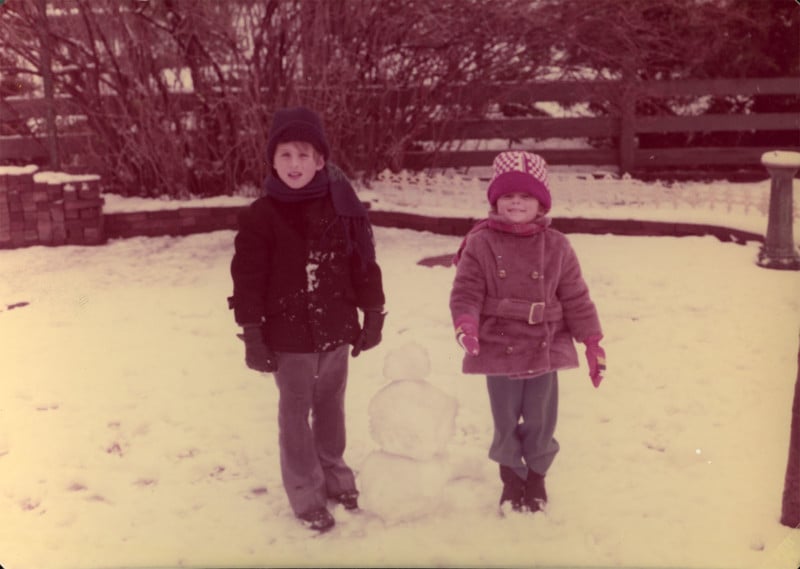
“I thought I would stay two weeks, but those weeks turned into months, and those months turned into a half year,” she says. “What I discovered surprised me. In mainstream media, there are two popular visions of Africa. On the one extreme, either war and famines and plagues, or the other safaris and exotic animals.
“It was here that I discovered a story I rarely read about in the mainstream media. What I found was something far different and more complex. There was a deep connection to the natural world. Trees had spirits. There was a reverence and understanding that people’s lives depended on nature.
“The land literally was their supermarket. While we didn’t have running water, electricity, or doctors, everything we needed came from the natural world. Though my life was vastly different from our lives in the Western world, that was not surprising. In fact, it was expected. What was truly surprising were all the things that we shared.

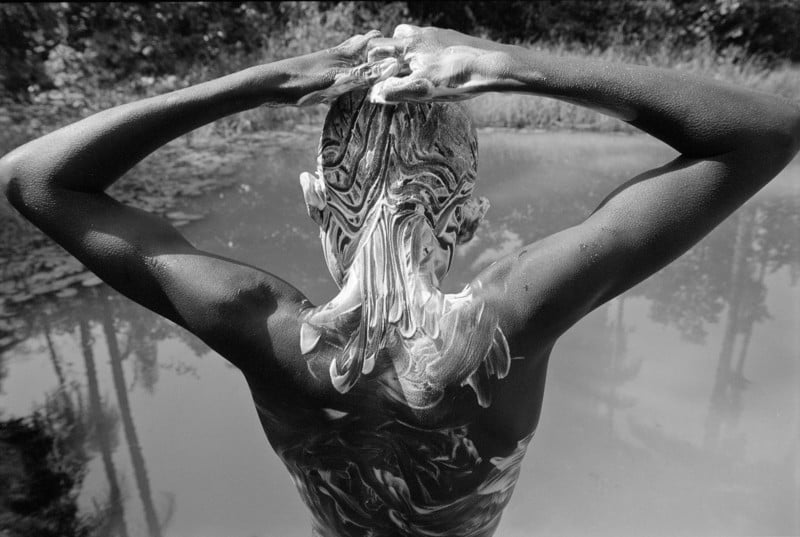
“My last evening in the village, I sat with a group of children beneath a sea of stars, talking into the night about my return home. One of the children, Alio, asked me if we had a moon in America.
“I think of Alio every time I gaze at a full moon, and I imagine him standing under that sea of stars looking up at it. The moon is like a collective third eye. It shows us our common identity without borders. It gives us a sense of oneness, a constant reminder that we are all tied together in an intricate web, whether we believe it or not.”
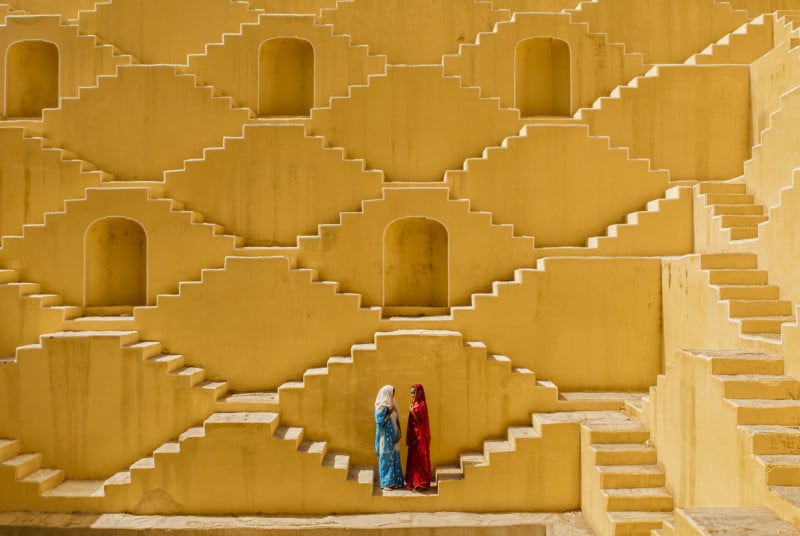
Vitale traveled to Africa with 100 rolls of Kodak Tri-X, some Fuji color negative, a Nikon F3 body, and just one 24mm lens.
![]()
The Dangers of Traveling
Photographing wild animals is always a dangerous sport, you may think. But think again.
![]()
![]()
“The scariest incidents have always involved people, not animals or the wild,” says the wildlife photographer. “It sounds romantic to travel the world, but the reality is that you must be emotionally self-reliant. I look back on my experiences and wonder how I got through some of them.
“They were sometimes unimaginable, often lonely, and occasionally utterly terrifying. I’ve had malaria, but you expect to get sick. It’s the psychological dangers that scare me the most. I’ve been harassed, threatened, and shot at, and I learned quickly that I must be thoughtful about how and where I work. No picture is worth my own personal safety.
The Inspiration of Photographer Gordon Parks
“Gordon Parks profoundly influenced my work when I moved to North Carolina and was intimately exposed to the racism and segregation that persists today,” says the conservation photographer.
“There is one image I will never forget Gordon Parks took of this experiment created 70 years ago that led to the Supreme Court’s decision in Brown v. Board of Education, demanding the racial integration of American public schools…
“The researchers would show children white and black dolls and say something to the effect of, ‘Show me the doll that you like to play with … the doll that’s a nice doll … the doll that’s a bad doll.’ The image of a black child crossing the white baby doll and the expression on his face is heartbreaking and cruel…
“Most of the African-American children from segregated schools rejected the black doll. When those boys and girls were then told, ‘Now show me the doll that’s most like you,’ some became ’emotionally upset at having to identify with the doll that they had rejected.’ This image has haunted me and speaks to the brutality which begins from the moment a child is born.
“I went on to start my documentary work as a teenager, learning about the discrimination and disparities between schools in Durham, NC, for African American communities and those for white children. Children in the black communities were taught hairdressing and mechanics while kids in the white schools were offered robotics and advanced classes.”
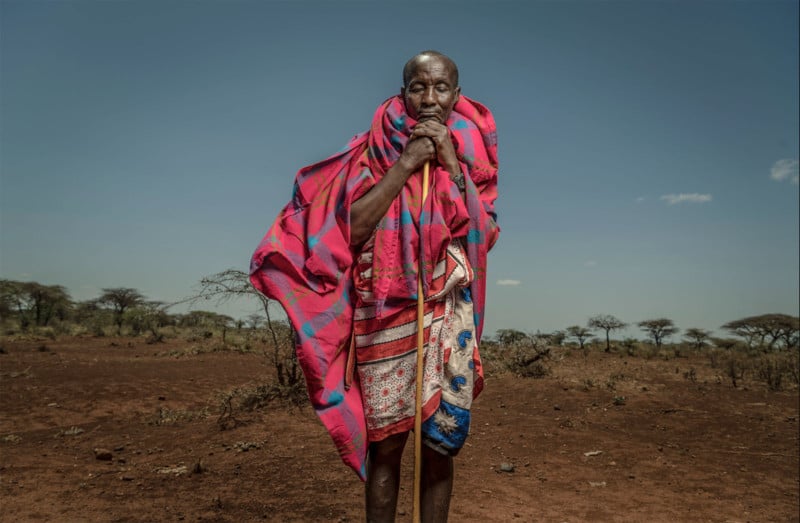
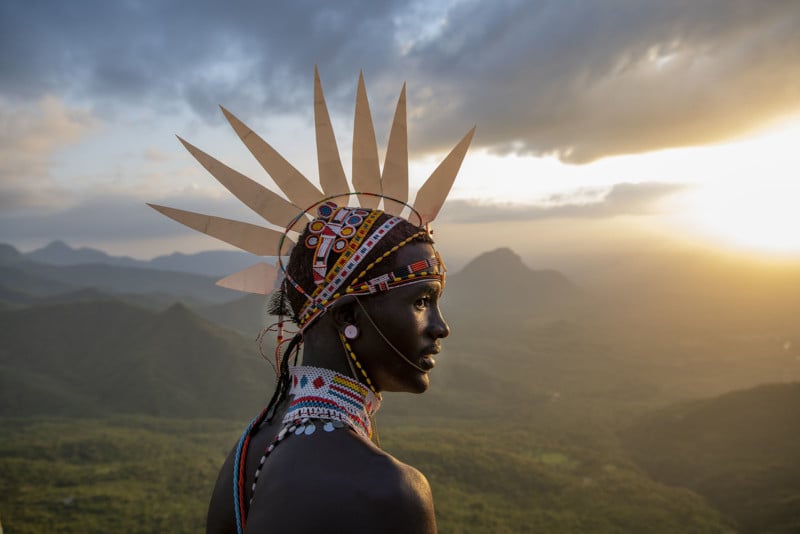
Captive Breeding of Pandas in China
The giant panda, or panda bear, is a bear species native to China. Its population is threatened by continued habitat loss and a very low birthrate, both in the wild and in captivity.
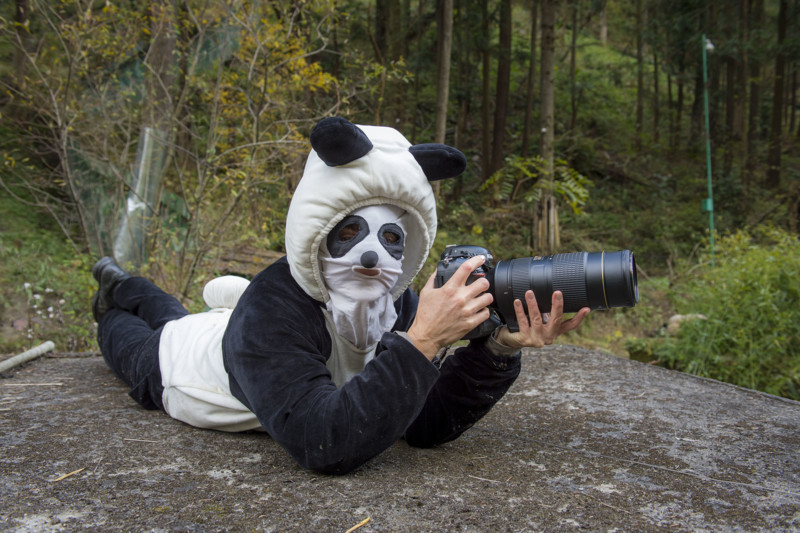
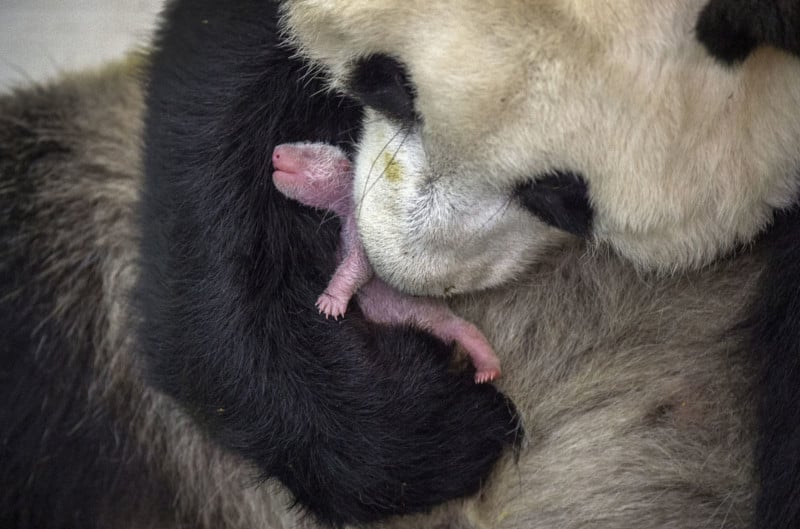
“The panda project is a project that I began by making trips to China over three years,” says Vitale. “I spent time researching and learning everything I could possibly find about pandas.
“Right now, fewer than 2,000 giant pandas are in the wild. Their breeding secrets have long resisted the efforts of zoos, and the mountainous bamboo forests they call home have been decimated by development and agriculture.
“But in a region where bad environmental news is common, the future of the giant panda might prove to be the exception. For over thirty years, researchers from the reserve have been working on breeding and releasing pandas, augmenting existing populations, and protecting their habitat. And they’re finally having success.
“They are taking captive-born pandas and releasing them back into the wild. They are investing billions into creating more habitats and connecting corridors. This is possibly the biggest reforestation program happening on the planet right now. It’s one of the few countries where forest coverage is growing.
“And as these bears trundle off into the wild, they take with them hope for their entire species. The slow and steady incline in the population of giant pandas is a testament to the perseverance and efforts of Chinese scientists and conservationists. China may be on its way to successfully saving its most famous ambassador and, in the process, putting the wild back into an icon.
“Surprisingly, this was one of the most challenging stories I’ve worked on. The biggest challenge was getting access to one of the world’s most endangered animals. They are multi-million dollar bears that everyone treats with kid gloves and are highly vulnerable.
“It was challenging to get close without interfering with their biology and conservation and in a way acceptable to its very protective minders. It was not just about getting access and gaining local trust but also about being able to work with wild animals [albeit in a panda costume sprayed with panda urine to look and smell just like their “family”].
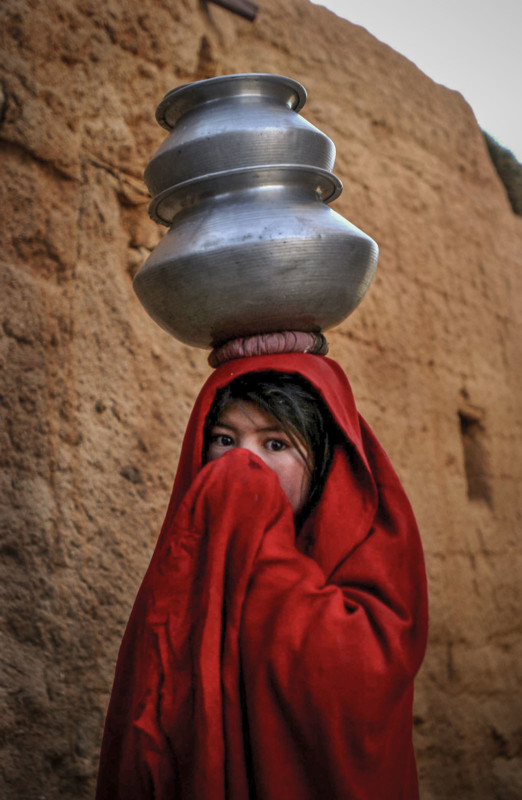
There Are No More Male Northern White Rhinos Left in the World
Today there are only two northern white rhinos alive, both in Kenya at Ol Pejeta Conservancy, and they are both females. In March 2018, Sudan, the last male, died surrounded by the people who loved and protected him.
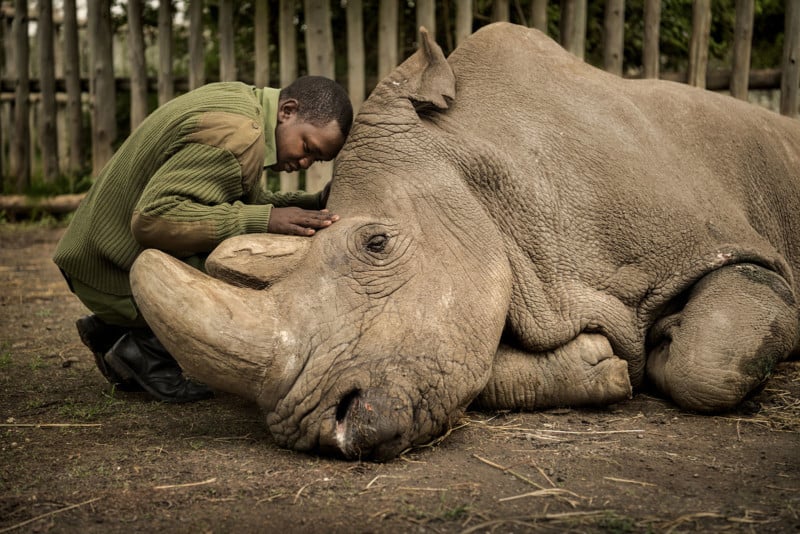
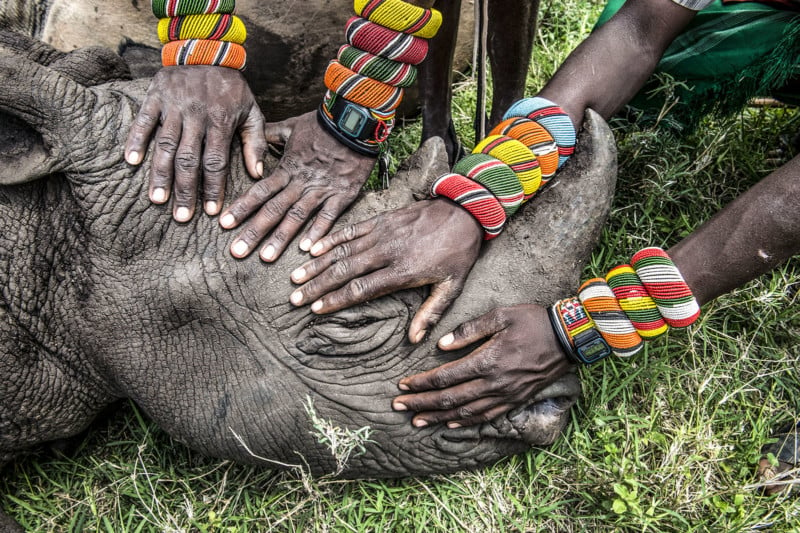
“It was silent, except for the rain falling, a single bird scolding, and the muffled sorrow of his caretakers,” says Vitale. “Watching a creature die—one who is the last male of its kind—is something I hope never to experience again. It felt like watching our own demise. These men spend more time protecting these animals than they do with their own children.
“If there is meaning in his death, it’s that Sudan can be our wake-up call. Our fate is linked to the fate of animals. Without rhinos, elephants, and other wildlife, we suffer more than a loss of ecosystem health. We suffer a loss of imagination, a loss of wonder, a loss of beautiful possibilities.
“What began as documenting extinction has a twist. Hope is not lost. Thanks to a bold plan orchestrated by the bio rescue project, northern white rhino embryos are now made from oocytes from Fatu and genetic material from deceased males. They will be transferred to a surrogate southern white rhino mother in the near future.
“The species may still be saved from extinction. Planet Earth is our only home, and we have poked some big holes in our shared life raft. We can make an impact simply by making our voices heard.”
The Camera Gear to Tell the Story
Vitale has been a Nikon Ambassador for about two decades. She is currently using two Nikon Z9 cameras and a variety of lenses from the Nikkor Z 24-70mm f/2.8 S, Nikon Z 100-400mm f/4.5-5.6 VR S, Nikkor Z 70-200mm f/2.8 VR S, Nikkor Z 85mm f/1.8 S, Nikkor Z 14-24mm f/2.8 S, and Nikkor Z MC 105mm f/2.8 VR S.
![]()
![]()
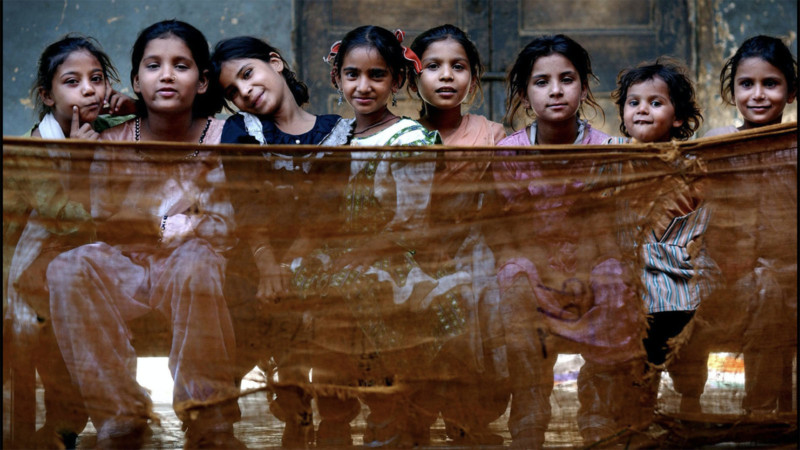
“My workhorse is the 24-70mm f/2.8, but my favorite is the 85mm f/1.8,” says Vitale.
“I usually choose, depending on what I’m doing, either the 70-200 or the 100-400. If I’m going to a place where I expect the wildlife to be farther away and I’m doing a lot of hiking, I take the 100-400.
“If I’m doing just pure wildlife, I’ll bring, rent, or loan one of the longer lenses like the 500 or 600mm. If it’s truly like wildlife far away, and I want that quality, but I find the 100- 400 does a lot for what I need.
“I love having one portrait lens like either the 85mm f/1.8 or the 105mm f/1.8. If I have something specialized to do, for example, at the elephant sanctuary where the space inside the enclosures can be tight, I might bring the 14-24mm.
“So, I have a variety of lenses, and it doesn’t mean that I take everything with me on each assignment.”
“When making pictures, I’ll have one wide lens and one long lens; usually the 24-70 and the 70-200 as an example [on two Nikon Z9 bodies], and I’ll be walking. That way, I’m ready to work at any moment, but if I’m making a video because I’ve been doing a lot of filmmaking now, then I only have one [Z9] body with me, and I’m just working with that one body on which I’ll change the lenses.”
“I’ll be using either a gimbal or a tripod, and I tend to hand hold it often. I shoot in 4K.”
![]()
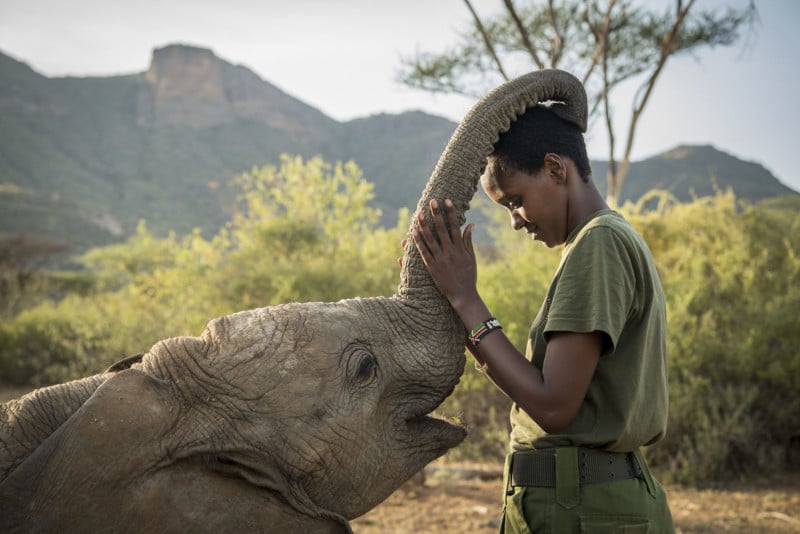
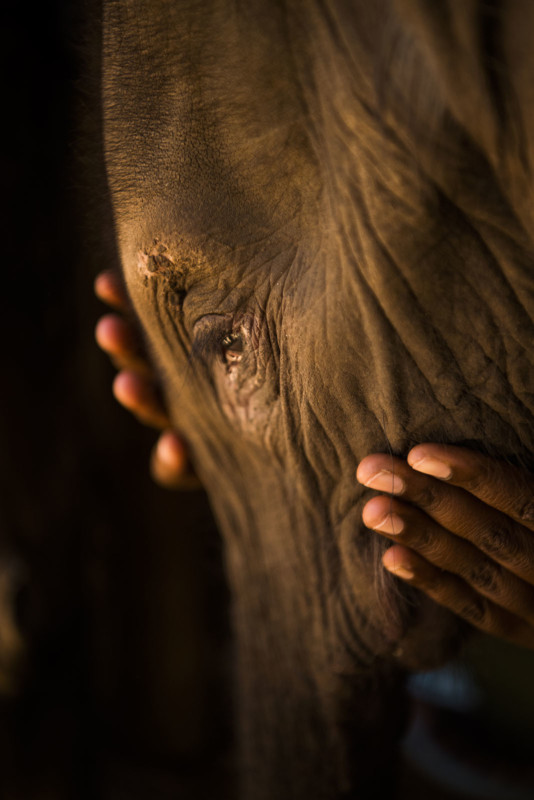
The Nikon D300s (discontinued in 2014) was one of the first experiences she had with shooting video. Vitale realized that film is another powerful medium for storytelling and wanted to diversify her skills, so she finished a degree in Multimedia Journalism in 2010.
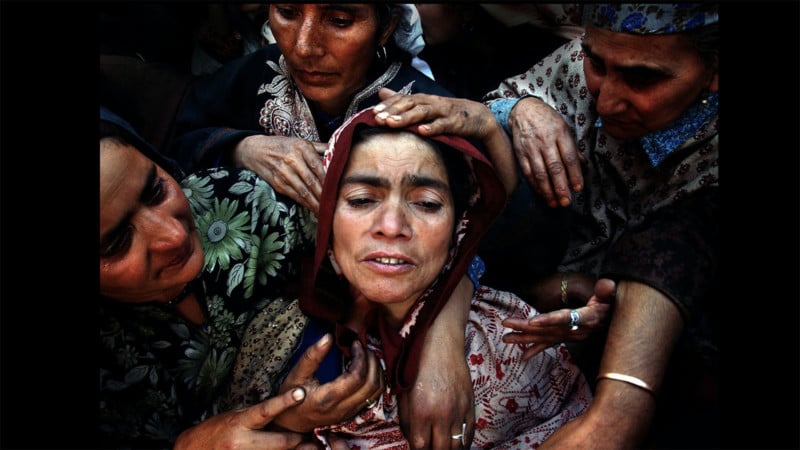
The gear fits in one Mindshift series backpack made by Think Tank Photo and weighs about 25 lbs. If she is truly in a remote place, she also uses Goal Zero solar panels.
Vitale does use the Nikon speedlights as well as the battery-operated Elinchrom ELB 500 TTL.
![]()
Her first digital camera was the Nikon D1x when she lived in Kashmir, India, in 2001. And her first film camera was a Pentax K1000 in 9th grade.
And the Old Days with Film in a Foreign Land
![]()
![]()
“Film had its own challenges because I think about when I was working as a conflict photographer [earlier in Prague, Czech Republic],” says Vitale. “It’s easier now because I would have to take the chemicals, all the little containers to process the film, and a huge Nikon [Super Cool Scan] scanner back then.
“I’d stay up all night long. I would make my pictures during the day, get back to the hotel, and set up the lab in the bathroom. I’d have to bring a blow dryer and dry the film, like leave it hanging there, chop it up, edit it, you know, up against the window, pick the pictures, scan them and then transmit it all night long.
“Looked back at that time, and I think life is far more reasonable [now with digital] like I have a rhythm and a pattern, and I feel like I was really trained working for the wire services because I’m used to captioning, downloading every day, and keeping my work organized, and now as a filmmaker, it’s essential to have all of those skills, to keep track of what you have.”
Making a Vital Impact
Vital Impacts is a non-profit organization founded by Vitale. The mission is to support organizations protecting people, wildlife, and habitats. Within six months, Vital Impacts parlayed a generous startup grant of $25,000 into more than $1,500,000 through the sale of fine art prints. These profits were passed onto unique conservation and humanitarian efforts around the globe.
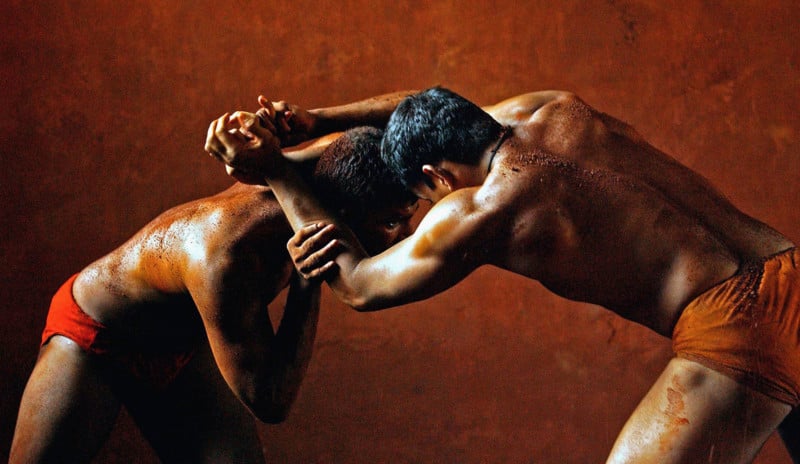
Vital Impacts also created a year-long visual storytelling mentorship program for 40 indigenous Kenyan conservationists. They work with the most established artists worldwide but are also particularly committed to amplifying emerging talent and creating opportunities for women and nonbinary photographers of color.
![]()
“For the past 25 years, I have been reporting on stories about humanity; impacts on the planet for publications like National Geographic, among many others,” says the conservationist with a mission. “I have witnessed first-hand the toll human activity has placed on plant and animal species in immediate danger of extinction, causing what scientists have identified as the sixth major extinction.
“This extinction event is different—not only is it driven by humans, but it is happening at an incredibly fast and accelerating rate. Removal of a keystone species significantly affects the ecosystem and impacts all of us.
“There’s a strong connection between visual imagery and empathy; seeing something helps us connect our brains and hearts to feel love and compassion for other living beings. While science and research are critical to understanding the planet and all the life we coexist with, photography can often reach people in different profound ways.
“Curating this offering was one of the most difficult parts of this project. I began reaching out to the people I admire as trailblazers and voices for the planet — heroes like Jane Goodall, who contributed photos from her time researching chimps in Tanzania. I asked established fine artists like Nick Brandt, Stephen Wilkes, Beth Moon, and Tamara Dean, but I also worked hard to find exceptional young talent from around the world that may not be widely known yet.”

Vitale feels that no matter where we go, the joy of human emotions remains the same. She hopes that more of us try to go a little bit deeper into learning each story and reveal more than a series of “exotic” images. Empathy and earning trust are the most important tools one can have in this profession.
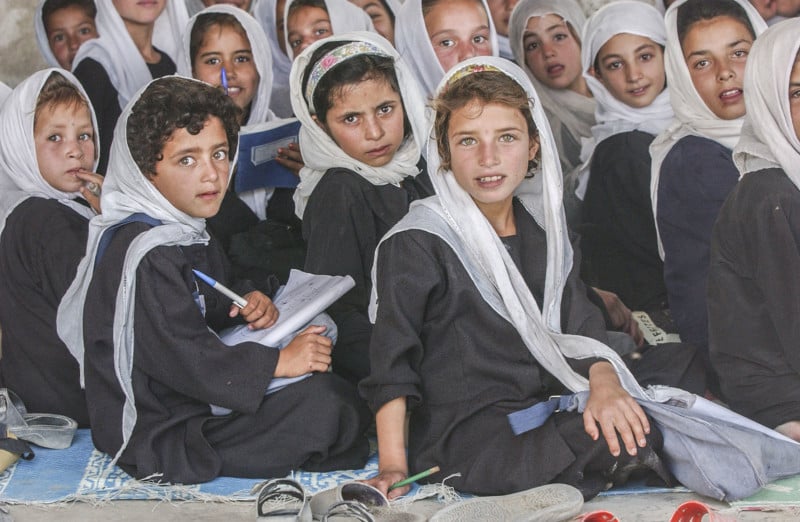
“So, my advice to those who dream about this is to find a story close – maybe even in your backyard – and make it yours,” says the photographic storyteller. “You don’t need to travel far. What you do need to do, however, is tell a story using your own unique perspective.
“Many young photographers think that traveling the world and photographing exotic places is the way to start a career, but in reality, it’s the complete opposite. Do something in your backyard, go deep, and show something that surprises us. Something that you think that people already know about and turn on its head by finding your own unique perspective.
“And the only way to do that is by taking time to study a subject deeply. And when I say, ‘go deep,’ I mean spend a minimum of a year or two studying the subject. The best photographers and storytellers out there spend years on a project.”
You can see more of Ami Vitale’s work on her website, and Instagram
About the author: Phil Mistry is a photographer and teacher based in Atlanta, GA. He started one of the first digital camera classes in New York City at The International Center of Photography in the 90s. He was the director and teacher for Sony/Popular Photography magazine’s Digital Days Workshops. You can reach him here.
Image credits: All photos by Ami Vitale